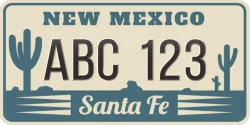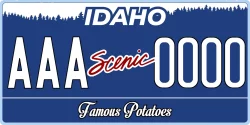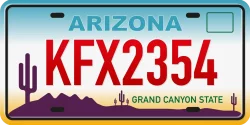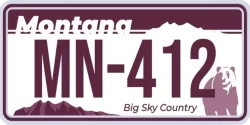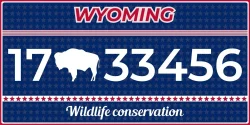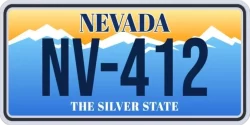Home » IRS Mileage Rates by State » Utah Mileage Rate
Last updated: October 2, 2025
If you drive for work in Utah, keeping an accurate mileage log can mean hundreds or thousands of dollars at tax time. Utah’s mix of Wasatch Front congestion, canyon closures, and big regional hops makes consistent tracking harder than it sounds. That’s why building an IRS-proof record around the IRS Mileage Rate Utah is essential for employees, self-employed drivers, and fleets.
In this guide, you’ll learn the 2025 rates, what they’re worth on Utah routes, and how MileageWise can help you capture every deductible mile without the busywork.
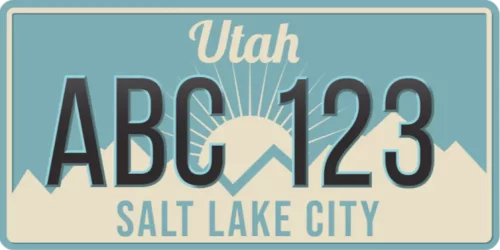
Table of Contents
Summary
- 2025 IRS Mileage Rates: $0.70/mi for business, $0.21/mi for medical/military moving, and $0.14/mi for charitable driving.
- Maximize Utah Deduction Potential: Your deduction potential adds up fast on Utah routes like Ogden–Salt Lake–Lehi loops or St. George–Cedar City runs.
- Reimbursement Rules: Utah doesn’t require private employers to reimburse mileage, but many align with the IRS standard; state employees have defined rates.
- MileageWise solutions: import your Google Maps Timeline into MileageWise to create an IRS‑compliant log.
Discover Your Business Mileage Deduction Opportunities in Utah
Ogden → Salt Lake City (38 mi)
Salt Lake City → Lehi (31 mi)
Lehi → Ogden (64 mi)
Total miles: 133 miles
Deduction 133 x 0.70 = $93.10
Provo → Orem (6 mi)
Orem → American Fork (9 mi)
American Fork → Provo (15 mi)
Total miles: 30 miles
Deduction 30 x 0.70 = $21.00
State-Specific Reimbursement: What Utah does and doesn’t require
Utah does not require private employers to give mileage reimbursement, but many of them choose it, and, typically using the IRS standard mileage rate.
For state government employees, the reimbursement for using a personal vehicle is $0.70 per mile as of January 1, 2025. If a government vehicle is provided and authorized, the reimbursement drops to $0.21 per mile.
Although private employers are not obligated to reimburse mileage, it’s important to understand local regulations, such as the Utah’s Workers’ Compensation code mandates that employers cover travel expenses related to medical care for employees injured on the job.
Tolls and parking are separate expenses; the IRS per‑mile rate applies regardless of fuel type, including EVs.
This page is informational and not legal advice—consult a tax professional for your situation. See more on our IRS Mileage Rates page.
2025 Mileage Rate
- Business Mileage Rate: $0.70/mi for business-related driving; use this to calculate deductions or set reimbursements.
- Medical/Military Moving Mileage Rate: $0.21/mi for qualified medical travel and moving (moving applies to active-duty military).
- Charitable Mileage Rate: $0.14/mi for service to qualified charitable organizations.
What is the IRS Mileage Rate for Utah worth?
| Route (one-way) | Approx. miles | 2025 value |
|---|---|---|
| Salt Lake City → Provo | 45 mi | $31.50 (RT $63.00) |
| Ogden → Salt Lake City | 38 mi | $26.60 (RT $53.20) |
| Lehi → Orem | 12 mi | $8.40 (RT $16.80) |
| Park City → Salt Lake City | 32 mi | $22.40 (RT $44.80) |
| St. George → Cedar City | 52 mi | $36.40 (RT $72.80) |
| Provo → Spanish Fork | 8 mi | $5.60 (RT $11.20) |
| Logan → Brigham City | 26 mi | $18.20 (RT $36.40) |
| Moab → Monticello | 54 mi | $37.80 (RT $75.60) |
| Salt Lake City → Tooele | 35 mi | $24.50 (RT $49.00) |
| Vernal → Roosevelt | 31 mi | $21.70 (RT $43.40) |
The calculations use the 2025 business mileage rate of $0.70 per mile.
Driving Across Utah: Different Regions and Challenges
- Wasatch Front (Ogden–Salt Lake–Provo): Peak-hour congestion and frequent short hops between client sites make stop‑and‑go driving common. Winter storms and inversion days can slow schedules and add variability to travel times. Access to I‑15 is great, but construction and lane closures can throw off timing.
- Wasatch Back & Cache (Park City, Heber, Logan): Mountain passes, snow, and ski traffic are recurring factors in Q4–Q1. Canyon closures can force long detours that complicate daily loops. Parking at resorts and event venues often varies by day and time.
- Southern Utah & Canyonlands (St. George, Moab, rural corridors): Long, sparse highway segments can mean bigger one‑way legs. Extreme heat affects timing, charging/fueling plans, and vehicle performance. National park congestion creates seasonal bottlenecks that stretch days. For field crews and tourism pros, well‑planned multi‑stop routes are key to limiting backtracking.
Which Workers Benefit the Most from Mileage Reimbursement?
- Real estate agents and property managers
- Mobile healthcare and home health nurses
- Trades and home services (HVAC, solar, electrical, plumbing)
- Field sales (tech/MedTech) across Silicon Slopes
- Construction supervisors and subcontractors
- Energy and mining field techs (Uintah Basin)
- Outdoor industry reps and resort operations
- Delivery, courier, and parts runners

MileageWise: Tailored Solutions for Every Driving Need
Utah driving conditions are variable and sometimes challenging: clear I‑15 lanes at noon, heavy Wasatch snow at 3 PM, then a canyon slowdown after 4. Short client hops along the Silicon Slopes corridor stack up to serious mileage across a week. Meanwhile, St. George crews can log two or three long legs per day with almost no city traffic—until peak tourist season.
Manual spreadsheets for mileage logging aren’t effective. You need a fast way to capture the past, a reliable system to record today. That’s exactly where MileageWise pays off for Utah drivers.
MileageWise offers three solutions for different situations:
1. Google Maps Timeline Import: the best first step
If you forgot to track trips, import your Google Maps Timeline and transform it into an IRS‑compliant mileage log in minutes—perfect for last quarter or last year. It structures dates, odometer ranges, and purposes, then helps you export a polished, audit‑ready report. This is the fastest way to turn your past Utah routes—whether along I‑15 or up Parleys—into a defensible log for reimbursements or taxes.
2. No Timeline? Use the AI Wizard
When Timeline data is incomplete or missing, the AI Wizard Mileage Log Generator can reconstruct trips based on your work patterns, typical clients, and regional routes. It fills gaps methodically, reducing the time you’d otherwise spend trying to remember weeks of site visits. Ideal for drivers with sporadic records or those who switched phones and lost history.
3. Going forward: the MileageWise mileage tracker app
For future drives, our ad‑free mileage tracker app records trips with precision and zero distractions. It keeps mileage logs accurate even on multi‑stop days from Ogden to Lehi or Park City to SLC. With a few taps, you’ll produce bulletproof, deduction‑maximizing reports.
Quick story: A local proof from the Wasatch Front
A mining engineer in Provo spent six hectic weeks managing site visits and supply runs across Orem, American Fork, and Lehi but forgot to log his miles. Realizing the oversight, he used MileageWise to import his Google Maps Timeline and quickly organized his travel into an IRS-compliant mileage log. After adding trip purposes and reviewing the details, he exported the report for reimbursement and his tax preparer. The whole process took just minutes, saving him hours of manual tracking. Thanks to MileageWise, he didn’t leave a single mile unlogged or unreimbursed.
Conclusion
Utah’s driving landscape is unique: short tech-corridor hops, mountain passes with sudden weather, and long southern stretches where each route matters. The stakes are high because every mile you fail to record erodes legitimate reimbursements or deductions.
IRS Mileage Rate for Utah: MileageWise offers three targeted solutions
- Use Google Maps Timeline Import to quickly recover the past.
- Use AI Wizard Mileage Log Generator when no past data and Timeline exists or it’s too spotty to rely on.
- Use the mileage tracker app to never miss a mile again.
Together, you’ll have a consistent, Utah-proof system for every situation.
AI Logs & Google Timeline Import
Try MileageWise for free for 14 days. No credit card required!
FAQ
What are the 2025 IRS mileage rates I should use in Utah?
Business is $0.70/mi, medical/moving is $0.21/mi, and charitable is $0.14/mi.
Does Utah require private employers to reimburse mileage?
No. Utah does not mandate a specific reimbursement rate for private employers, though many adopt the IRS standard.
What’s the mileage reimbursement for Utah state employees?
As of Jan 1, 2025, $0.70/mi when using a personal vehicle; $0.21/mi if a government vehicle is provided and authorized.
What’s the fastest way to recover missing mileage for Utah drives?
Import your Google Maps Timeline into MileageWise to convert past routes into an IRS‑compliant log.
How can I maximize savings with the IRS mileage rate in Utah?
To maximize your savings, accurately track all business-related mileage, including site visits, client meetings, and supply runs. Using tools like MileageWise can help you automatically log and classify trips, ensuring you don’t miss any deductible miles and simplifying the process for tax filing.



